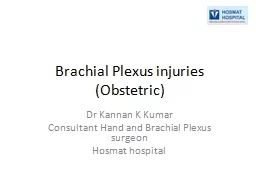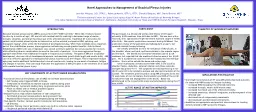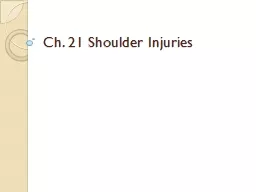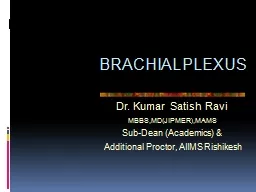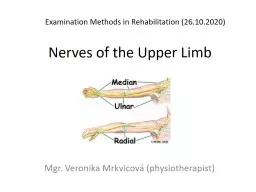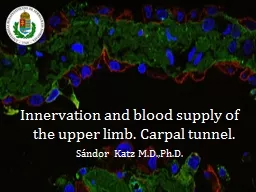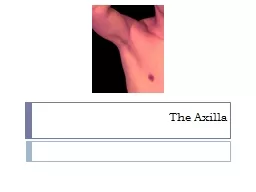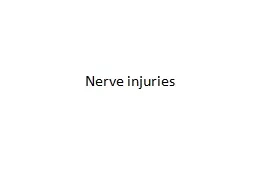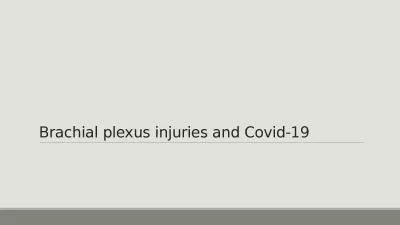PPT-Brachial Plexus injuries
Author : min-jolicoeur | Published Date : 2017-05-30
Obstetric Dr Kannan K Kumar Consultant Hand and Brachial Plexus surgeon Hosmat hospital Dr Paul Brand fellow in Hand surgery and brachial plexus Christian medical
Presentation Embed Code
Download Presentation
Download Presentation The PPT/PDF document "Brachial Plexus injuries" is the property of its rightful owner. Permission is granted to download and print the materials on this website for personal, non-commercial use only, and to display it on your personal computer provided you do not modify the materials and that you retain all copyright notices contained in the materials. By downloading content from our website, you accept the terms of this agreement.
Brachial Plexus injuries: Transcript
Download Rules Of Document
"Brachial Plexus injuries"The content belongs to its owner. You may download and print it for personal use, without modification, and keep all copyright notices. By downloading, you agree to these terms.
Related Documents

